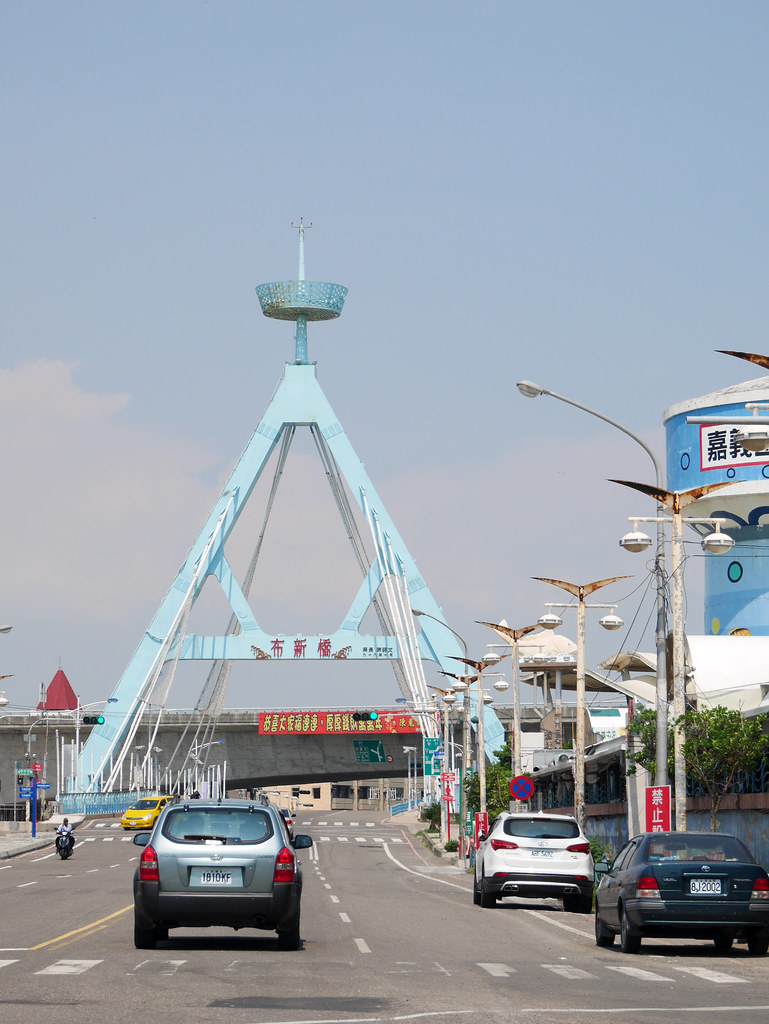Chiayi County is located in southern Taiwan, bordering Nantou County and Kaohsiung City to the east, facing the Taiwan Strait to the west, and separated from Tainan City by the Bajhang River to the south. To the north, it is adjacent to Yunlin County, divided by the Beigang River and Shigui River, and it completely surrounds Chiayi City. The Tropic of Cancer passes through the southern part of the county, placing Chiayi within both the subtropical and tropical climate zones. The county seat is located in Taibao City, and the county is administratively divided into 2 cities, 2 towns, and 14 rural townships (including 1 indigenous township), totaling 18 administrative divisions.
Historical Background
Chiayi County was historically known as "Zhu Luo County," a name derived from the transliteration of the local Hoanya indigenous people's settlement. In 1787, following the Lin Shuangwen Rebellion, Emperor Qianlong of the Qing Dynasty commended the local people for their loyalty and bravery in defending their city. As a result, he issued an imperial decree renaming the county to "Chiayi," which means "commended righteousness."
Geography and Natural Environment
Chiayi County lies within the Jianan Plain, with most of its terrain below 100 meters in elevation. The land is fertile, and the county has a well-developed irrigation system. The county's geography can be classified into four major types: mountains, hills, plains, and coastal areas. The eastern region is dominated by the Yushan and Alishan mountain ranges, while the central region consists of the Chiayi and Zhuqi hills. The western part belongs to the Jianan Coastal Plain. The highest point in the county is the main peak of Yushan in Alishan Township, while the lowest point is located in the newly reclaimed coastal area of Aogu Wetlands in Dongshi Township.
Chiayi County’s coastline is characterized by the Yun-Chia Barrier-Lagoon Coast and the Jianan Barrier-Lagoon Coast. The Waishanding Sandbar is Taiwan’s largest offshore sandbar, and the county also boasts the largest lagoon area in Taiwan. The coastal areas, shielded by sandbars, create shallow waters that are ideal for aquaculture and salt production, making Chiayi an important base for Taiwan’s fisheries and salt industries.
Hydrology and Climate
Most of Chiayi County’s rivers originate from the high mountains in the east and flow westward into the Taiwan Strait. Major rivers include the Beigang River, Puzi River, and Bajhang River, along with tributaries such as the Shigui River, Niuchou River, and Qingshui River. The county also has several reservoirs, including Renyitan Reservoir, Zengwen Reservoir, and Neipuzi Reservoir, along with irrigation channels like Dalin Canal, Haoshou Canal, Zhongxing Canal, Daojiang Canal, and Longen Canal, ensuring stable agricultural irrigation and water supply.
Chiayi County experiences a subtropical monsoon climate, with short winters and long summers. The flatland areas receive the most rainfall from June to September, with an average annual precipitation of about 1,821.6 mm. Rainfall is concentrated during typhoon seasons, while winters are dry, with some months experiencing no precipitation. Mountainous areas like Alishan receive significantly more rainfall, averaging 3,940.6 mm annually. These regions remain cool throughout the year, with summer temperatures (June to August) averaging around 14°C, while winter temperatures can drop as low as 6.5°C.
Economy and Specialties
Chiayi County has abundant natural resources and a thriving agricultural and fisheries industry. The coastal fishing ports of Dongshi and Budai are known for producing oysters, shrimp, and various fish species, with the "Xi Shi Clam" considered a delicacy. Inland, Minxiong Township is famous for its goose meat, pineapple cakes, and kumquat jam, while Xingang is known for its Xingang Malt Candy and Bengang Cake. The Alishan region is renowned for its high-mountain tea, particularly Alishan tea, which enjoys great popularity.
During the Japanese colonial period, Chiayi developed a lumber industry due to its proximity to the Alishan forests, leading to a booming timber processing and export trade. To transport precious wood, the Japanese constructed the Alishan Forest Railway, which remains one of Taiwan’s most famous scenic railways today.
Chiayi County integrates agriculture, tea cultivation, fisheries, and tourism, while preserving a rich historical and cultural heritage. From the breathtaking sea of clouds and tea plantations in Alishan to the seafood and coastal scenery of Dongshi and Budai, Chiayi County showcases Taiwan’s agricultural and fishing vitality while maintaining a unique blend of tradition and modernity.














